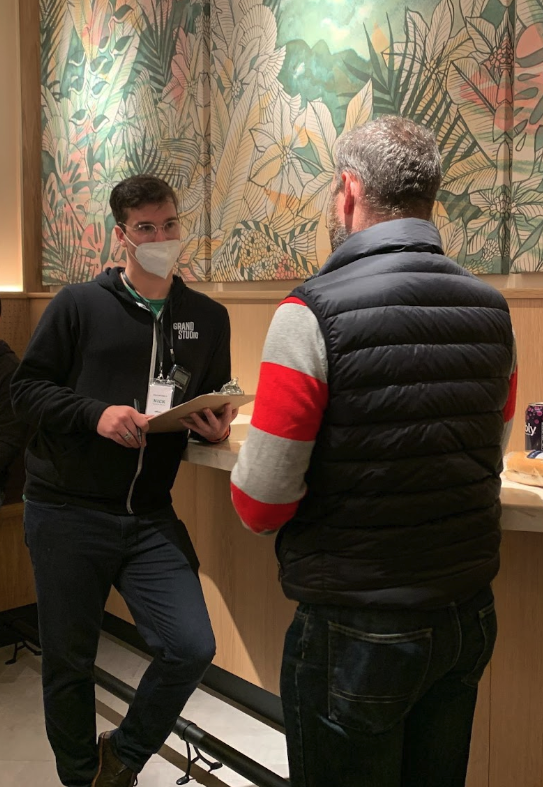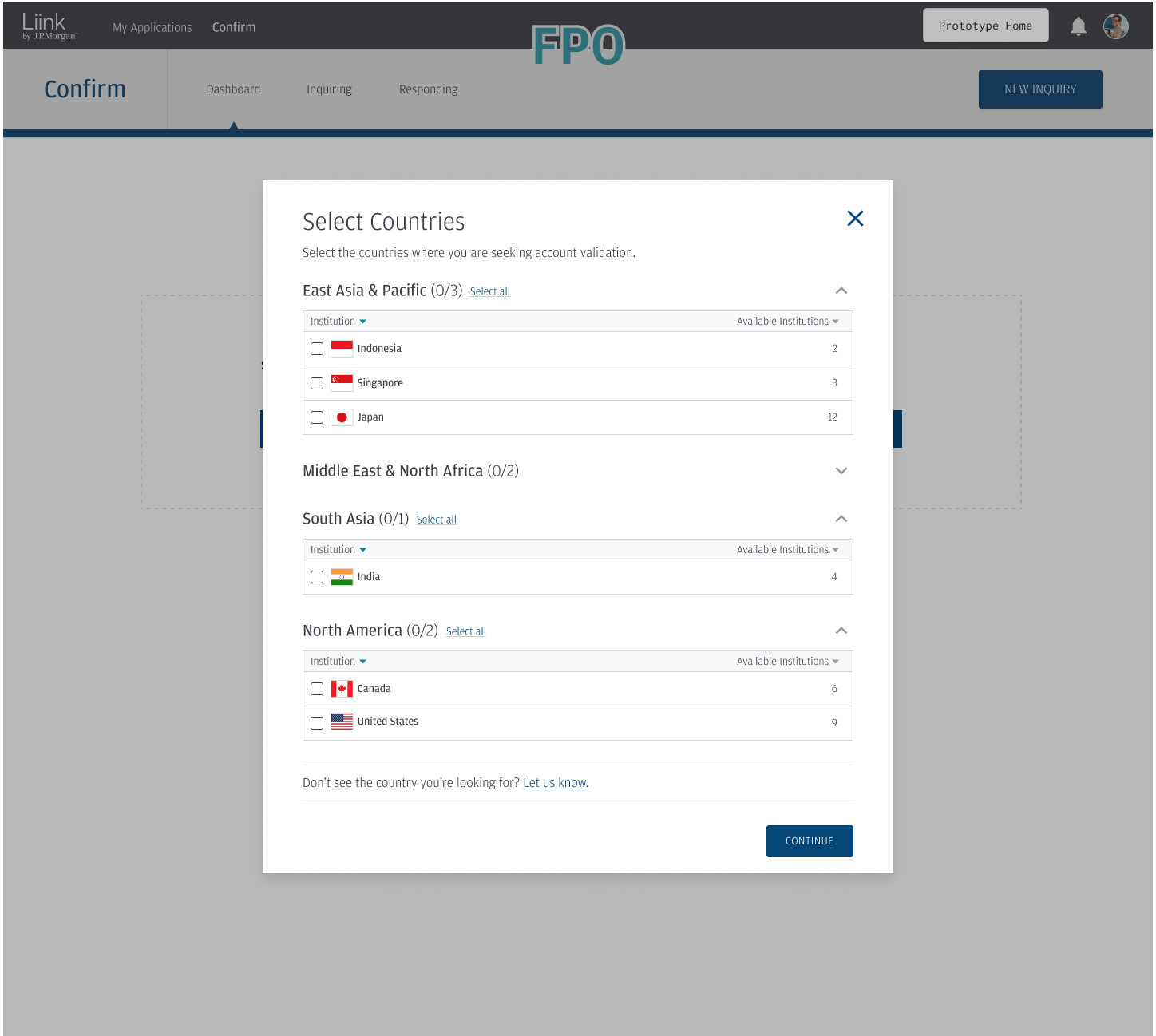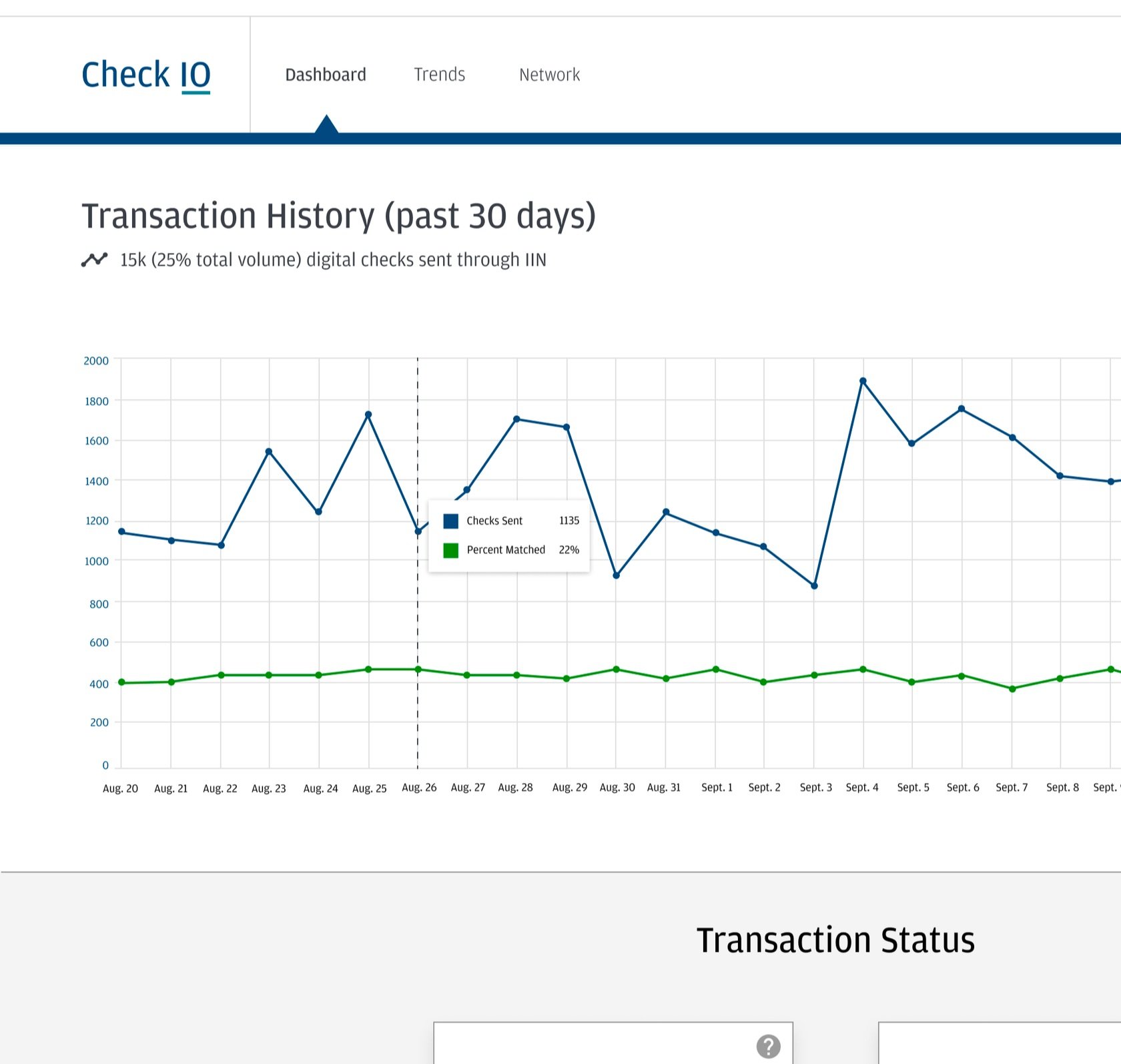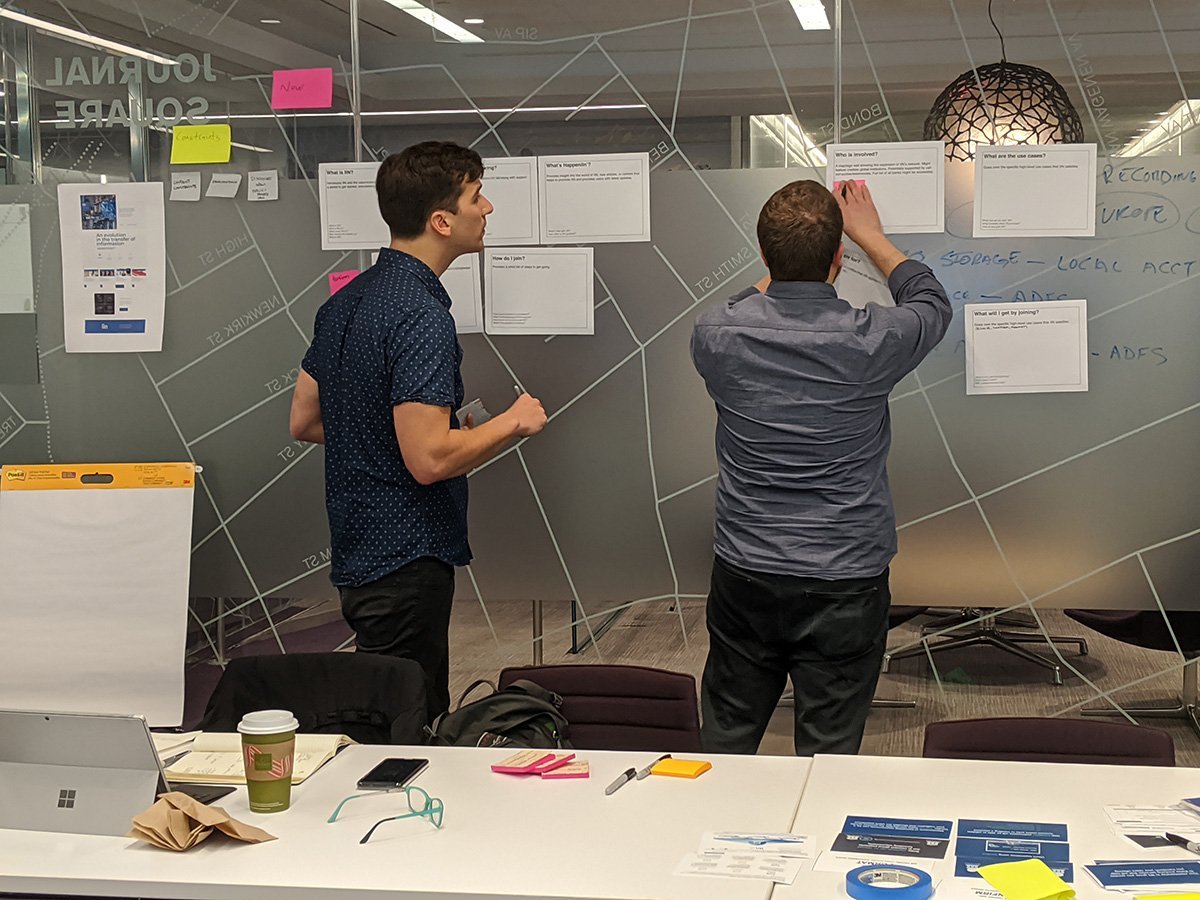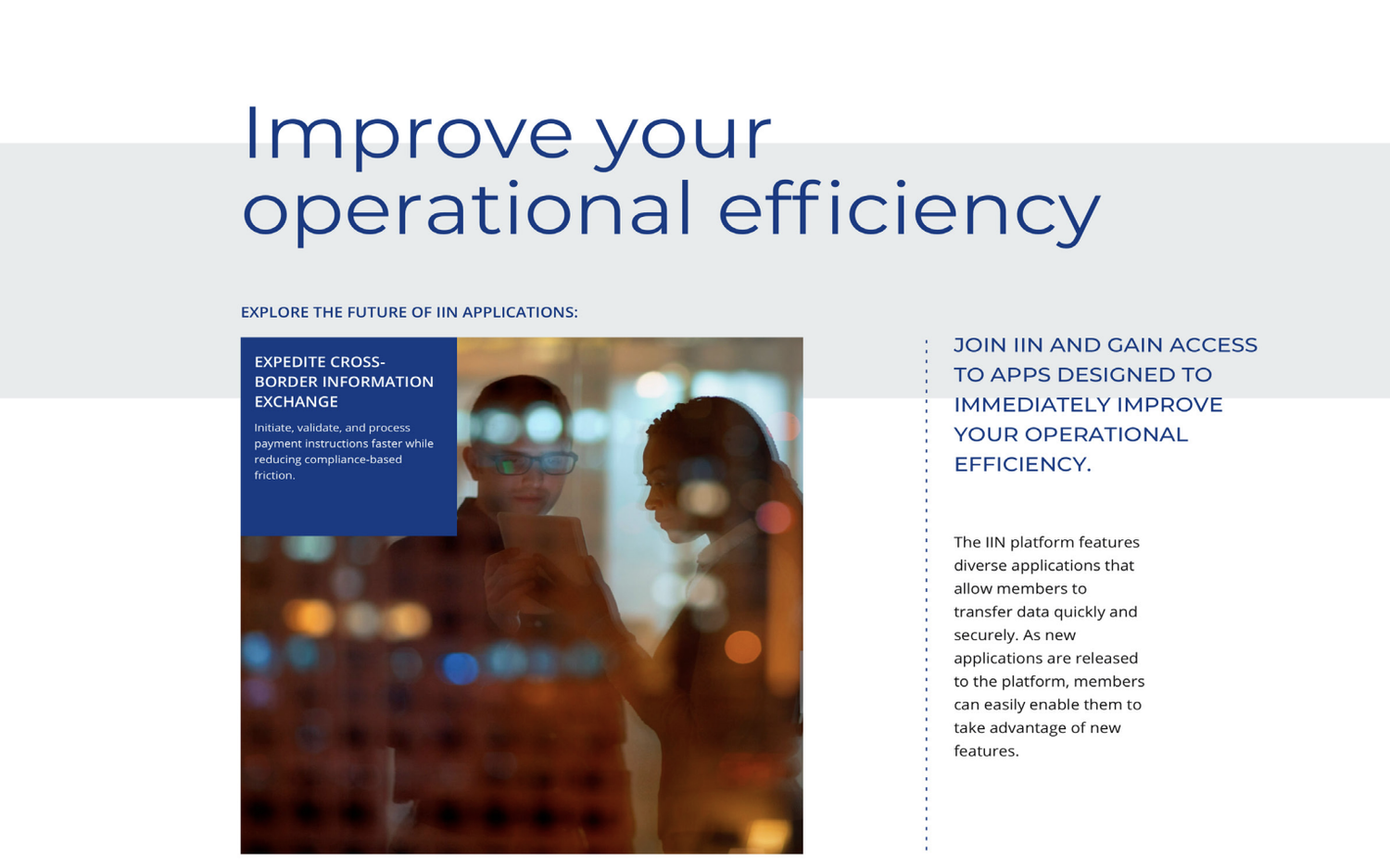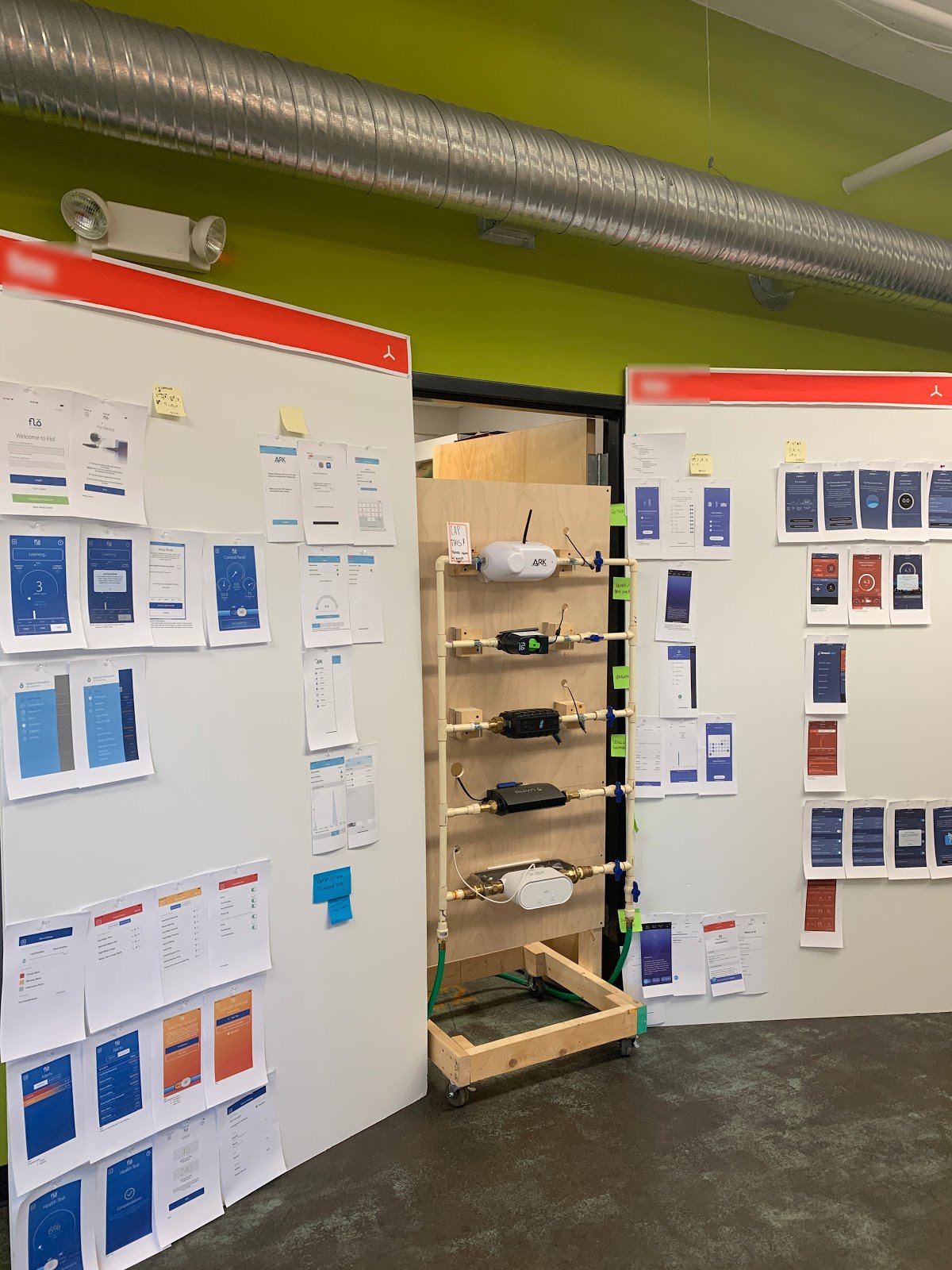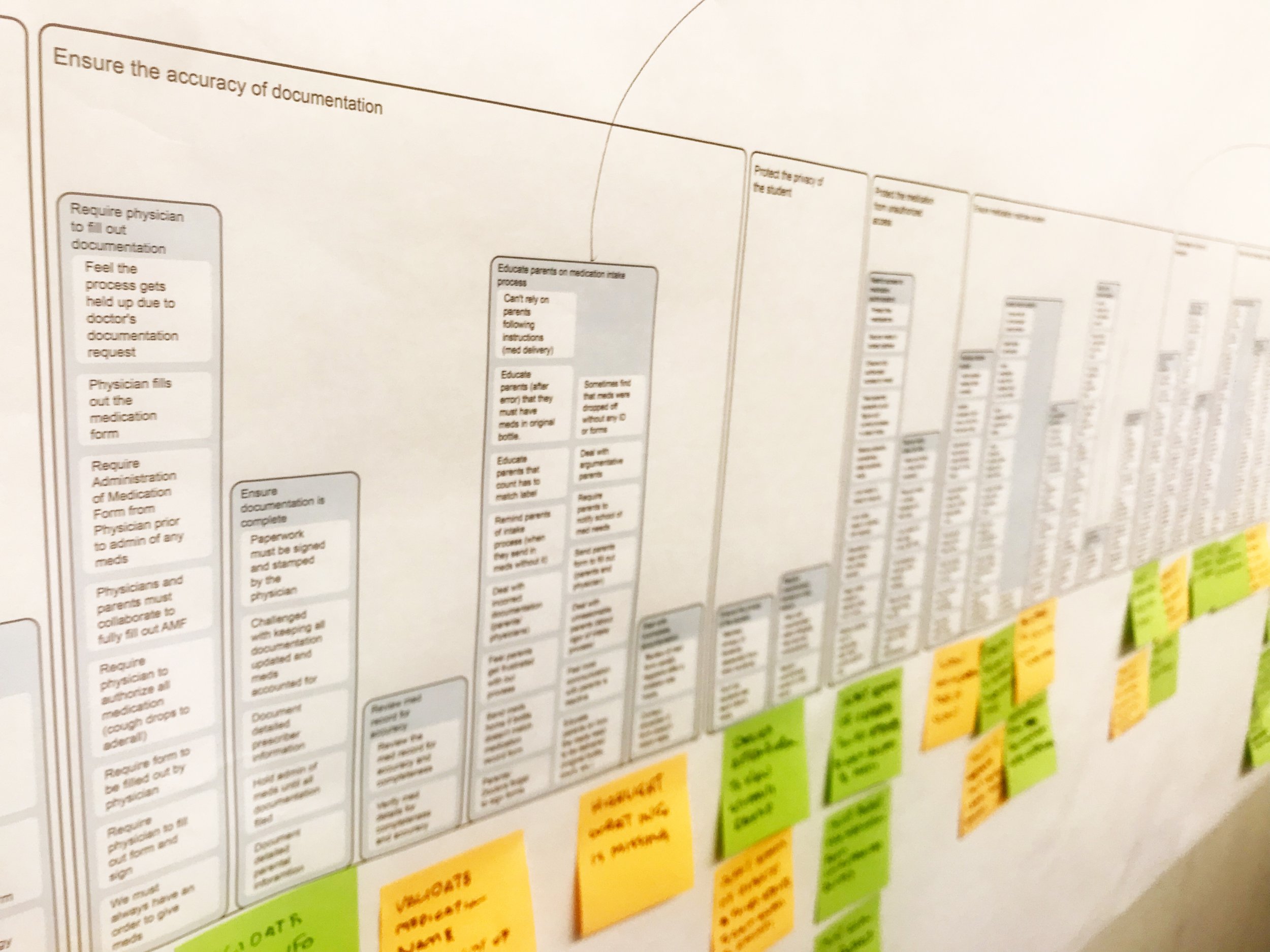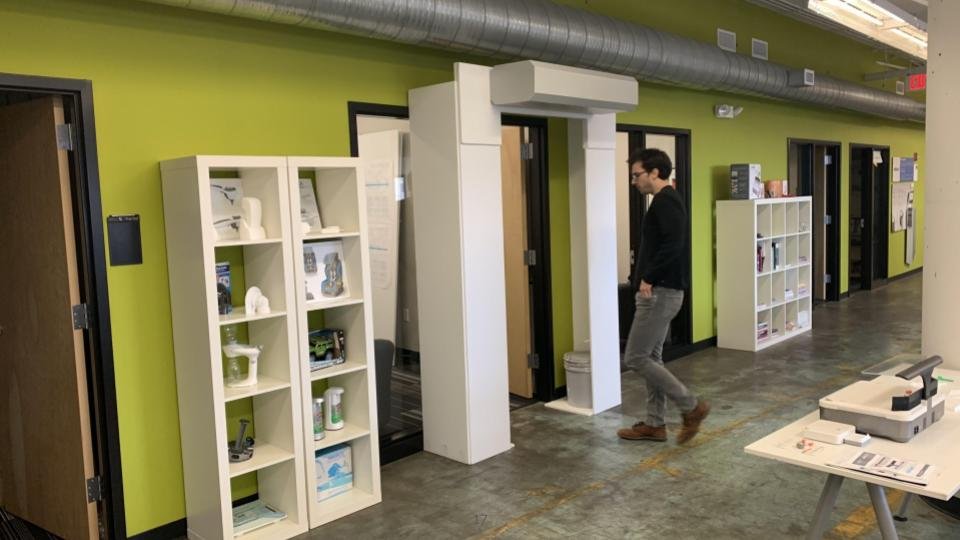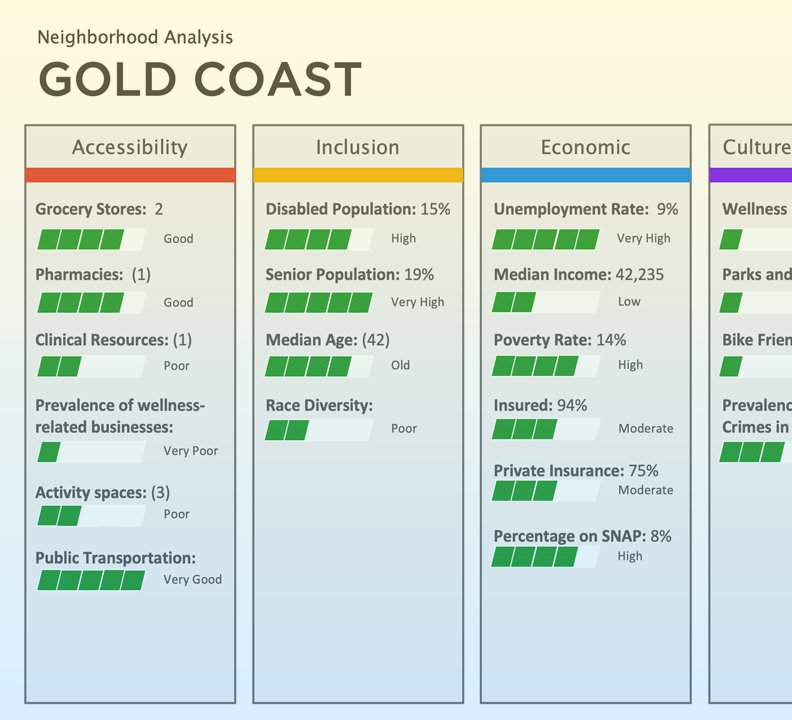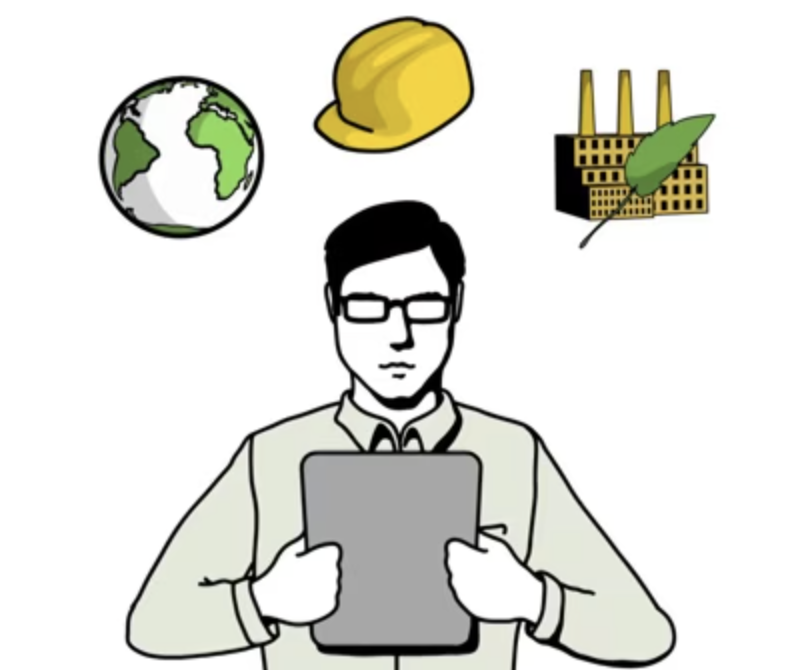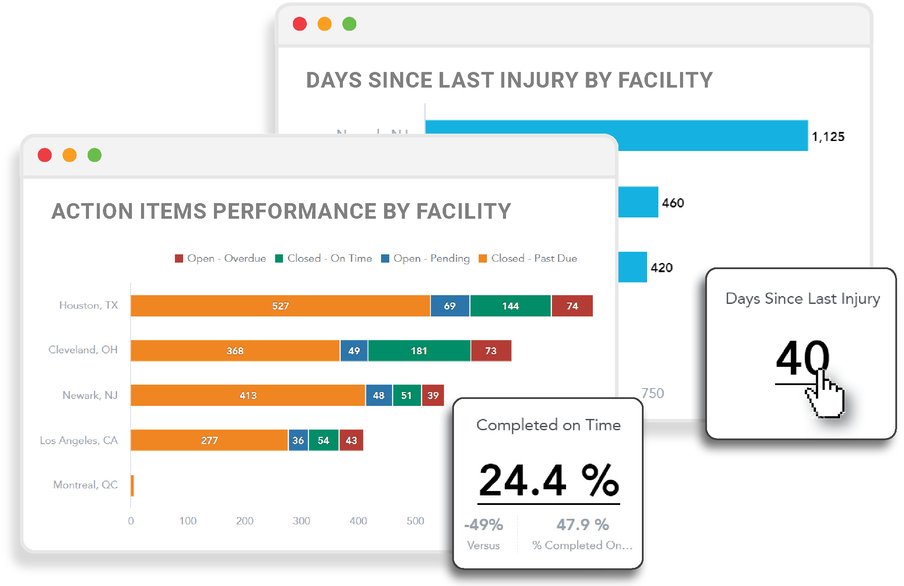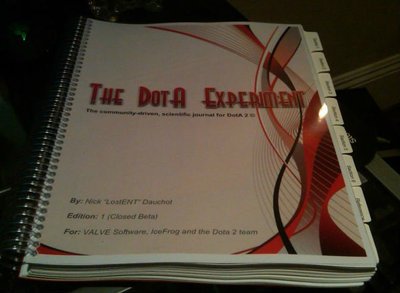Helping supply chain source, MSM, and planners mitigate impacts to their supplier network
Lead | 2024
Problem: A global corporation needed help bringing awareness to the health of their supplier network
Approach: We ran multiple interviews and workshops with supply chain professionals to co-design a comprehensive application for monitoring and managing supplier-related risks which built off of previously designed applications.
Result: A product that alerts supply chain professionals to risk within their network and surfaces mitigations options to overcome medium and long-term events.
Lessons: We often found ourselves trying to accommodate more features and more personas than our budget and timelines would allow. Over time we learned to adopt a backlog approach and prioritize features for subsequent releases. We also learned that data mapping is sometimes more complicated than UI conversations. Building a strong feedback loop between data mappers and our design team allowed us to rapidly make changes depending on data availability.
Helping a legacy manufacturer reduce inquiries to their internal support desk
Lead | 2024
Problem: An industrial agricultural manufacturer needed help reducing inquiries made to their support desk.
Approach: We ran generative user research with prospective end users, and a quantitative analysis of over 300,000 support tickets to understand major pain points and use cases for an automated solution.
Result: An interactive chatbot which leverages GPT. This bot is currently being used by 34% of the companies international workforce with 62.5% ticket resolution success rate, and 50% success for escalated routing, saving our client significant overhead costs.
Lessons: These are scenarios to use tools like ChatGPT and not to use ChatGPT for research synthesis. It’s sometimes best to do synthesis by hand instead of relying on an LLM. There’s also no need to try to synthesize thousands of data points, when synthesizing hundreds will give you a result that you can trust just as well (e.g. 99% confidence).
Helping Value Stream Leaders visualize and optimize their supply chain
Lead | 2023
Problem: Value stream maps are complex artifacts that have been manually created for decades to understand supply chain flow. We helped our client design a tool that would digitize these maps and reduce the labor required to produce one.
Approach: A series of collaborative workshops with stakeholders and prospective end users.
Result: An interactive prototype with features specification for development
Lessons: If key business stakeholders are not present in design sessions, it is important to sync up with them regularly to understand their vision and keep them informed. Otherwise, the final result might not match their vision and you may end up needing to add on additional timeline.
Creating a system of reusable components for a supply chain ecosystem
Lead | 2023
Problem: Three franchises within clients company needed help providing visibility into their supply chain and relevant supply chain KPI’s.
Approach: Each digital twin was designed over a two month sprint, leveraging a set of reusable components and design systems we had established in previous projects. This improved the efficiency of how we designed each digital twin.
Result: A set of wireframes and features specifications to help illustrate product functionality. The design was further iterated upon through collaborative exercises with development as technical feasibility was evaluated.
Lessons: Striking a balance between reusability of components and customization can sometimes be hard. If you do want to enable customization of applications, you should expand your project scope to account for the research necessary for understanding user and business requirements.
Helping supply chain planners mitigate the impacts of supply chain events
Lead | 2023
Problem: Client needed help understanding and mitigating impacts of events on their Medical Technology supply chain.
Approach: We conducted a series of interviews with internal supply chain experts / users of the product. This research allowed us to identify information that would need to be surfaced within different levels of the product’s information architecture- specifically related to event impacts on raw materials and finished goods.
Result: An interactive prototype and design specification that was further iterated upon with development as technical feasibility was evaluated.
Lessons: In consultancy it’s extremely important to remain flexible and adaptive to shifting timelines and scope. Sometimes clients might push deadlines and move things around, and that’s okay, but be prepared to have trade-off conversations if they impact your development timeline. Additionally, be prepared to have conversations with development regularly so that they can adjust their scope as well
Improving the value of frictionless shopping for on-the-go shoppers
Lead + Sr. Designer | 2021-2022
Problem: Client approached our team with a need to understand the contexts in which their stores would be viable from a business perspective, and meaningful from a user perspective.
Approach: We deployed ethnographies and jobs-to-be-done research across multiple territories. Our goals were to understand how different stores within different context were performing and the needs of people that used them within those contexts.
Result: We proposed problem-centered design recommendations to improve the store’s, and insights into how and when new stores should be deployed.
Lessons: It’s important to understand Tesler’s Law when working on radical innovation. Removing complexity from one area of a system is likely to cause new complexity in others. For example, removing check-outs and receipts from a retail experience will add additional burden to the customer who needs to understand a new format. Context is also very important when evaluating retail format, as you need to be sure your format is positioned in a place where is satisfies a specific need, otherwise it will not be meaningful to customers. Additionally, store associates are just as much users of a store as customers.
Helping patients get hospital-grade healthcare at home
Sr. Designer | 2022
Problem: Client approached our team with a need to understand how to improve their Hospital-at-Home protocol, which was becoming a popular method of healthcare after Covid.
Approach: We deployed user interviews with six different persona groups represented across the patient journey. We mapped out a patient journey to visualize pain points and inefficiencies in the existing process.
Result: We found a few major pieces in the process were due to people and communication problems, specifically transitioning from one critical provider to another. We provided an updated journey map that unwound some of the complexities in the existing process, and proposed some hypotheses to test in a trial setting.
Lessons: Eventually insurance stopped covering the Hospital-at-Home protocol which impacted the viability of the process we were improving. It’s good to keep an ear out to the external environment to monitor for things like this when working in medical as they can directly affect your project. Additionally, it’s good when working in medical to be explicit about the difference between findings and insights. Findings in scientific environments are usually validated multiple times as truths, where insights can be more open to interpretation and lead to hypotheses.
Helping an incumbent insurance provider understand the need for travel insurance products Post-Covid
Sr. Designer | 2021
Problem: Client wasn’t sure about the value of travel insurance in a Post-Covid traveling world, and what a travel insurance solution from client might look like.
Approach: We interviewed travelers from across the United States remotely in order to understand traveling patterns, interest in and sentiment on travel insurance, and their definition of travel protection.
Result: We designed a set of travel insurance concepts, including a traditional and competitive travel insurance product that client could deploy.
Lessons: When working on innovation projects, it’s important to understand the difference between radical and incremental innovation. Not every company is prepared to handle radical innovation, and presenting concepts that are infeasible can show a lack of empathy for the business, no matter how compelling a concept might seem to a user.
Helping banks securely exchange valuable data to support frictionless transactions
Sr. Designer | 2021
Problem: Client wanted to create an application that would enable institutions around the world to sell data that could be used to verify international transactions. This product was aimed at solving problems related to fraud and inertia in the payments processing experience due to missing customer information.
Approach: We designed this “data marketplace” through a series of collaborative workshops with project stakeholders.
Result: We produced a set of wireframes which eventually lead to high fidelity design and development of the product itself.
Lessons: It’s important to respect the businesses’ vision for a product, and it’s also important to understand when it is a good idea to trust your gut as a designer and veer away from it. We made a very complex product that had involvement from many stakeholders, but it likely could have been simplified for end users to really get value from it.
Helping banks securely automate the manual process of processing paper checks
Sr. Designer | 2020
Problem: Lockboxes systems are a time consuming and manual process used by financial institutions to process checks. The team at Chase’s Onyx division had a vision for a product that could make this laborious much more efficient through blockchain technology.
Approach: We worked closely with a project stakeholder to design an application that would enable users to monitor checks as they became validated, along with a set of KPI’s to show hours saved manually validating checks.
Result: We designed a set of wireframes and designs which were eventually used to create the final product.
Lessons: When working on innovating on something with decades worth of regulations, be sure to consult with legal and technical teams to understand how feasible it is to accomplish something, and what data exists to support certain use cases. Sometimes you will learn that features are not possible for a reason.
Enabling blockchain application developers to create and govern complex financial applications
Sr. Designer | 2020
Problem: Client needed a place where prospective developers could learn to start building on their financial platform.
Approach: We interviewed developers, specifically back-end developers and garage developers, to understand what information they would need in order to start building on their network.
Result: We composed a set of wireframes which we iterated on over a series of design workshops and progress reviews with internal stakeholders. The output was a fully designed developer ecosystem which has been implemented and is in use today,
Lessons: When working on concept / vision projects (e.g. projects used for communications / business buy-in > development purposes), don’t get too trapped in the weeds of ironing out exactly how something should work. Instead, focus on the value propositions and how the product will support the end user and business.
Designing a home for marketing and distributing decentralized finance applications
Designer | 2020
Problem: Client division needed a marketplace that users could access to download financial applications, connect to various API’s, and learn about how the ecosystem worked. Otherwise, there would be no way for them to access applications.
Approach: We conducted a series of sprints to understand problems that the their team experienced, and to design a solution that met they and their prospective customers needs.
Result: We designed an app marketplace from wireframe to high-fidelity renderings, and it is used by financial institutions around the world today.
Lessons: App stores can be extremely complicated, especially with regards to IAM, content management, and providing the necessary front-end and back-end tooling to allow users to create and modify applications. App stores have a lot of different personas with different needs to be taken into account. It’s good to establish who these people are early, and what capabilities they will have within the app store’s design.
Helping an incumbent communicate the value of blockchain to counterparty institutions
Designer | 2019
Problem: Client needed a new marketing site for their blockchain to assist with the sales and customer onboarding.
Approach: We deployed a content strategy methodology including interviews with Chase stakeholders, as well as proxies to different personas. We developed four personas for key Liink user roles and used those to develop a message architecture and identity for the site itself.
Result: We delivered a site, which has since been updated, but still includes content decisions made by my team.
Lessons: When working with senior stakeholders, be careful not to overwhelm them with too much information- otherwise your findings can come off as too technical. Additionally, it’s important to understand the capabilities of the team that will be implementing your design, and to design something that matches what they can actually build.
Assisting homeowners with the installation of thermostats in their home
Designer | 2019
Problem: Client wanted to make thermostat installation process easier on the homeowner.
Approach: We conducted ethnographies to understand what issues people experienced when installing a smart thermostat, and how added, subtracted, or modified components might help solve for those issues. Methods included 4 contextual inquiries with homeowners with high/low DIY skills.
Result: A smart thermostat designed to make installation easy.
Lessons: It doesn’t matter how easy your product is for you to use, or how easy you think it will be to use if asking customers to mess with wiring and electricity introduces a risk that cannot be easily mitigated.
Providing homeowners and business owners with tools to prevent water damage in their buildings
Designer | 2019
Problem: An incumbent plumbing company had a desire to enter the smart home/IoT space with was a smart water monitoring system.
Approach: We conducted a competitive analysis and ethnographies to map the user experience and identify opportunities to improve on an existing design.
Result: The final output was a list of 13 prioritized recommendations for the digital and industrial product.
Lessons: This was a really hard project in terms of understanding how to communicate bad news to a client (E.g. the investment they want to make will not pay off). We broke some hearts during this project, and ultimately someone lost their job. I learned a lot about how to frame findings in a productive way, rather than highlighting the flaws of a system alone. There is a time and place for human-centered design, but sometimes all you need is good industrial design to improve an existing product and to fix obvious problems.
Supporting homeowners with storing things in their home garage
Designer | 2019
Problem: Client had need to understand how people organize things in their garage and what some opportunities might be to innovate in the space.
Approach: We conducted ethnographies with homeowners in the Toronto area.
Result: An innovative garage storage system that is on the market today.
Listed as inventor on patent
Lessons: Be aware of the fact that though people might have problem (e.g. their garage’s storage) it is likely not one of their biggest problems, and will live for years with a sub-par garage instead of investing in it. Garage’s are (typically) allowed to be ugly compared to other areas of the home. This was a lesson in understanding the magnitude of a customer’s problem compared to bigger problems.
Reducing the complexities school nurses face when administering medications
Designer | 2019
Problem: Our client had a need to refine a medical product designed for medication administration. They had a patent, wireframes, and a prototype. What they did not have is confidence that the concept would fit into the highly-regulated environments it was made for.
Approach: We employed a competitive analysis, user interviews, and a Kano analysis to help design a product tailored to the medication administration process.
Result: A story and initial concept for a medical tool specifically designed for highly-regulated environments.
Listed as inventor on patent
Lessons: Be weary of radical innovation in a tightly regulated space. You might learn of a problem that exists for a reason (e.g. nurse’s need to use physical paperwork instead of digital tools to manage meds in a school). This becomes a problem when you have a solution designed for a problem that cannot be solved due to regulatory reasons outside of your control, no matter how compelling your product is. Be prepared to shift your concept into another vertical if necessary.
Creating light in the right places for homeowners
Designer | 2018
Problem: Our client had an interest in creating an innovative consumer light switch.
Approach: We applied ethnographies to understand what issues people experienced with lighting in their home, and how a smart switch could help solve them.
Result: The first light switch that could be connected to both Alexa and Google Home ecosystems. Eventually this product was expanded on to be the first “wireless light switch”. Listed on Amazon
Lessons: Simple things like light switches should not require an instruction manual.
Streamlining the construction estimation process for contractors
Designer | 2018
Problem: Our client was interested in understanding the experience of estimating construction projects and how software might be used to assist in the process.
Approach: We scheduled interviews with real construction workers based upon two segments. These two segments provided insights into the estimation process from both commercial and independent contractors, whom had very different needs.
Result: A prototype for a software platform called which was designed with every step of the estimation experience in mind.
Lessons: As a junior, be prepared to learn instead of act when on intense UI projects. Getting too involved can actually stifle the team’s progress.
Balancing architect-approved aesthetics with fly-proof functionality
Designer | 2018
Problem: Client approached us with a need to innovate in the Air Curtain space. Air curtains are used in places that serve food to keep bugs out with a strong gust of air at the entrance. A major ask of theirs was to understand what an "Architect-Friendly" air curtain is and how to design one within the constraints of their design and brand language.
Approach: We conducted 4 interviews with architects and 7 interviews with stakeholders within a two-week timeframe.
Result: A recommendations report based upon the findings. Finally, I worked with our industrial designers to help design the air curtain itself. On Powered Aire’s website
Lessons: This project was a great lesson in simplifying research findings for the business. Presenting too much information can be overwhelming, and distract business from what they really need to understand (e.g. what to build and how).
Balancing quantitative and qualitative insights to support city leaders with decision-making
Designer | 2018
Problem: Lakewood, Ohio wanted to improve the health of it's city by introducing a new pro-wellness system.
Approach: We interviewed owners of wellness-related businesses and services to understand their challenges and opinions related to working in Lakewood. Afterwards, we audited all territories in Lakewood based around their accessibility to health facilities, public transportation, and healthy food.
Result: A full research report identifying areas of strength and weakness in Lakewood.
Lessons: This project was a great lesson in doing secondary research. We were able to find a wealth of information online that helped us piece together a great story about city health and how to improve it.
Illuminating the role of closet lighting for homeowners
Designer | 2018
Problem: Our client wanted to innovate in the bedroom closet space, particularly through closet lighting.
Approach: Ethnographic Research was the course of action, with a focus on how people use their closets, what pain points they experience, and how lighting plays a role in their lives and in their closets.
Result: What makes this study interesting is that the concept was ultimately invalidated, with many research participants showing how seemingly unusable areas of the closet are still used to meet other needs, for example, long term storage.
Lessons: Be adaptive and stay flexible when conducting research. You might have a great protocol that needs to be tossed in the trash once you are actually on site. This might be because of diminishing returns, or new business research questions that need to be addressed. Staying confined to a protocol comes off as robotic sometimes, and users can sense it. Additionally, this project was a good example of trying to solve a problem that did not actually exist. Communicating this effectively is a skill that is important to show the business empathy.
Bringing a legacy platform to mobile for Environmental Health & Safety auditors
Scrum Master & QA | 2015-2017
Problem: Scout and tracer are both incident reporting tools utilized by a variety of companies to help monitor and track environmental health and safety issues, as well as manage change for those issues.
Approach: Our team’s role was to help bring these desktop native products to Android and iOS devices. We accomplished this by applying agile methodologies to develop epics in a timely fashion with continuous QA to assure the product would keep working. My role as a scrum master involved managing scrum for two onshore and offshore teams.
Result: Both products are actively in use today.
Lessons: When working with global development teams, it’s important communicate ideas concisely and to limit the degree to which they can be interpreted, otherwise you might cause more confusion than clarity. This project was also a testament to the importance of usability and user research, in that testing concepts early can reduce costs for business in the future when user requirements are discovered in the field.
Making a legacy system more accessible for Environmental Health & Safety auditors
Scrum Master & QA | 2015-2017
Problem: A legacy environmental health & safety product needed to move to the cloud to assist factories at places like Nintendo and BASF with regulatory OSHA / EHS auditing.
Approach: We took a desktop product and made it Browser Independent. This would allow them to perform audits on any browser that they had access to, and eventually mobile devices as well. My role was as scrum master and QA where I performed white and black box testing, and was scrum master for two teams.
Result: ProActivity suite is available through Chrome, Safari, and Firefox and is actively used by companies around the world today.
Lessons: Moving legacy systems to the cloud is very hard, a lot harder than building cloud software from scratch. The more features you try to enable through the cloud, the higher the chances that they will break.
Understanding and improving the Dota 2 new player experience
Researcher | 2013 - 2014
Problem: Tracking a community’s growth and sentiment is difficult. After graduating from the University of Arizona in 2012, I wanted to run a research report about my favorite game, Dota 2. This was not a paid project, or endorsed by Valve.
Approach: Created a 90+ point questionnaire and released it through Reddit and other popular Dota 2 channels. I released the questionnaire over two summers and compared the results as the community grew from 100,000 to over 1 million users, and synthesized the results into a report.
Result: Delivered to Valve at the Dota 2 International 2 & 3 in the format of two printed research journals, and provided the community with the results as well in the format of interactive PDF's.
The Dota Experiment 1 | The Dota Experiment 2
Lessons: I learned a ton from this project that still sticks with me today. Primarily, the importance of good survey and experimental design, and the importance of reporting findings and insights concisely. Additionally, I learned how to compose a research report.






